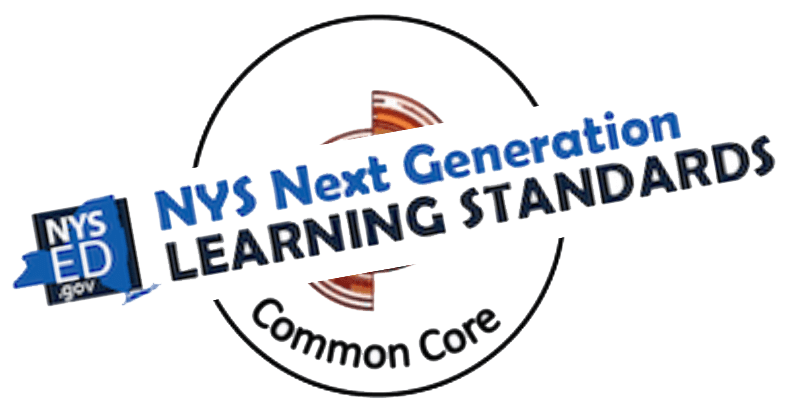Next Generation Learning Standards are new standards to replace Common Core that describe what students are expected to know and be able to do at various grade levels in English language arts and math
COMMON CORE

BACKGROUND
Common Core
The Common Core State Standards are a single set of educational standards for kindergarten through 12th grade in English Language Arts and Mathematics, agreed to by 45 states, including New York. They were released in 2010. The purpose of the Common Core standards is to “provide a consistent, clear understanding of what students are expected to learn, so teachers and parents know what they need to do to help them.”
However, much of the anger over Common Core came from the way it was implemented: First, it was written by Achieve, Inc. under the auspices of the National Governors Association (NGA) and the Council of Chief State School Officers (CCSSO). Both are trade associations (organizations founded and funded by businesses that operate in a specific industry), and members have no legislative authority to represent states. Also, funding for Common Core came from private interests such as The Bill and Melinda Gates Foundation. In addition, the standards themselves are deeply flawed as acknowledged by NYS Governor Cuomo, “The fact is that the current Common Core program in New York is not working, and must be fixed.”
Enter the Next Generation of Learning Standards. In response to the negative reactions and high opt-out rates, NYS revamped and renamed the standards over a two-year period. Like Common Core, these new standards describe what students are expected to know and be able to do at various grade levels.
CLOSER LOOK
Next Generation Learning
| WHAT THE STATE CLAIMS | NOT SO FAST |
|---|---|
| New York no longer has the Common Core. | New York no longer has the Common Core. That is a myth. The truth is that New York kept the elements of the Common Core that make possible standardized testing. Susan Ochshorn of ECE PolicyWorks, however, argues that New York's rebranding has not changed the essence of Common Core. |
| Over 130 educators and parents worked together to make recommendations and revise the standards, resulting in a new set of revised English Language Arts and Mathematics Learning Standards. | Unclear how much teacher, parent, and public input shaped the final document. A Governor’s Task Force made the initial recommendations in December 2015, and its proposals remain the backbone of the document. The task force was headed by Richard Parsons, former chair of Citigroup, rather than a person with education credentials. |
| “These new standards recognize the importance of preparing New York’s children for success in life through a rigorous education and provide the foundation needed to get there.” | Too often children in more affluent communities receive the greatest support and greater funding, while children who need the most support to succeed in school and life receive the least. Changes to learning standards do nothing to alleviate these inequities. |
| We are repeatedly assured that the Regent’s goal is to maintain the “Rigor of the Standards by balancing the need for conceptual understanding, procedural skill and application.” | "As a teacher, I always thought my goal was to educate students, starting from where they were, and helping them to grow academically, intellectually, and emotionally as much as possible. Standards were supposed to be a guide, not a template. Flexibility, not rigor, was key." |
| The Early Learning Standards represent a collective agreement among educators and collaborators of the age appropriate instructional goals for young children. | According to Bianca Tanis, an elementary special education teacher in the Lower Hudson Valley, the new standards sprinkle the word “play” but retain the performance expectations that pressure educators to remove play from the curriculum. In later grades, there are gestures toward accommodating children with different needs, but the standards render these points moot by keeping the Common Core’s inflexible expectations about reading benchmarks. |
| From engageny website: “The revised New York State Standards aim to reimagine the educational framework for English language arts and mathematics, with the goal of better supporting educators in their instructional practice and to provide additional guidance on achieving a vision of 21st century literacy.” | J.R. Wilson, a math teacher and advocate here at Truth in American Education, did a side-by-side review of the 2nd-grade math standards, as well as, a spot check of specific math standards in grades 4, 5, and 6. Essentially, as far as math is concerned, they just changed the name and didn’t address the problems with the Common Core Math Standards. A few tweaks in ELA standards,b ut Ultimately, the revision of New York’s ELA standards does not eliminate the chief problem inherent in Common Core and that is the emphasis on informational text. In a nutshell, this effort amounts to nothing more than a rebranding of Common Core. For full article and details see here |
NYS Next Generation Learning Standards
See below for the standards and various articles that discuss the standards
